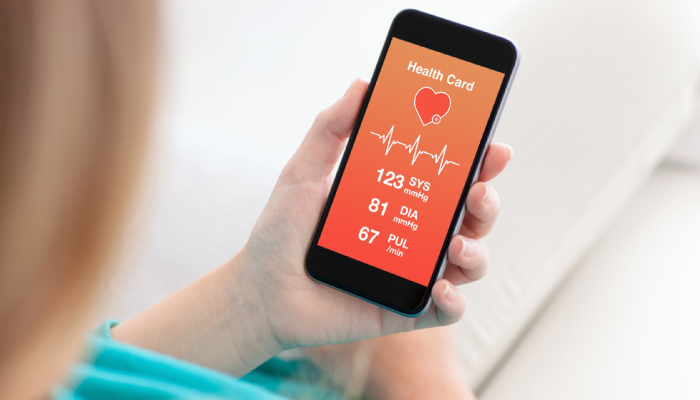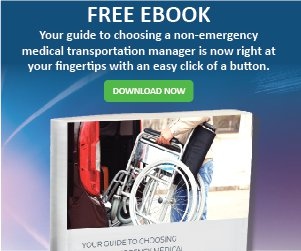 Great Results for Hospitals, Proactive Understanding for Patients, and You Won’t Believe What It Could One Day Do for Insurance Premiums
Great Results for Hospitals, Proactive Understanding for Patients, and You Won’t Believe What It Could One Day Do for Insurance Premiums
The Internet of Things, wireless devices that aren’t phones, promises the koolest, most innovative, interactive products out there. Parents can put a band on their baby’s ankle and track their breathing and sleep positions. Athletes can track their speed, distance, jumps, and velocity for optimal performance. And thanks to the many fitness devices on the market, people now have insight into their physical activity and heart rates like never before. What’s really exciting however, is the progress being made in the field of biometric monitoring as it relates to home health. The strides are going to help change health care radically. Hospitals are already seeing great results.
Liken it to car technology. If the air pressure in your tires is low, the car’s system sends you a message and the problem is solved before it escalates into a bigger problem. The alert comes well before you’re aware there is a potential problem. Biometric monitoring is meant to do the same thing. It alerts patients and their health care providers of a potential problem before a patient would likely recognize it on their own. Now that the Affordable Care Act incents health care providers to keep people healthy, we’re starting to see great results in trial programs that are sure to become future best practices.
Target: Congestive Heart Failure Patients
Flagstaff and Verde Valley Medical Centers first started placing home health monitoring kits with discharged patients following treatment for congestive heart failure or related cardiac conditions in 2011. In just 4 years, parent company Northern Arizona Healthcare says it has saved up to $92,000 per patient for doing so.
"Putting smartphones and biometric health-monitoring devices in the hands of patients empowered them to take better control of their health," Gigi Sorenson, RN, NAH's director of telehealth services, said in a statement. "We've tracked significantly fewer hospitalizations, shorter hospitalizations and dramatically lower costs." They aren’t the only ones getting stellar results.
Modern Healthcare reports that the Veterans Health Administration has long been a pioneer in electronic health monitoring at home starting as early as 2003. In 2008, they published a study of 17,000 of the VA's early home-monitoring program participants. It showed a 25% reduction for them in hospital bed days and a 19% reduction in admissions, with an 86% mean patient-satisfaction score. As of 2013, 144,000 high-risk veterans with chronic conditions are now taking advantage of the program. High success rates mean people are at home and in their communities for longer periods versus being in the hospital or in long-term care—that’s great for everyone and lowers health care costs.
How do these programs work for patients?
The wireless devices can range according to an individual’s care plan and often upload information to an app on your phone or tablet and can also connect directly with the patient’s health care provider. Scales, thermometers, glucose meter adapters, blood pressure monitors, and pulse oximeters can all deliver data on a patient from home. Imagine having a child with Type 2 diabetes and being alerted on your watch that their blood glucose levels were dropping. It’s possible now. A company called Dexcom has a mobile app platform for managing diabetes that is compatible with Apple Watch and works on your cell phone as well, but its sensor is invasive and has to be inserted under your skin.
Both Apple and Google are reported to be developing sensors that will help physicians and patients monitor health without having to input information or use invasive sensors. Eventually with enough data, analytics and algorithms, apps will even be able to detect people’s mood swings and stress levels—no data entry required about how they feel that day. With it, home health monitoring all gets easier.
The possibilities for insurance premiums
Forbes reports via one person working on a stealth wearables project that the “Holy Grail” is glucose monitoring because of the insights it could provide into what someone has eaten. “That would be a crucial data point for insurers, since diet has a far greater impact on health than activity. A large portion of today’s $2.6 trillion health care bill is driven by behavior; in particular, bad-diet decisions that lead to obesity and diabetes.” Imagine a world where health care premiums are discounted based on how healthy your behavior is via diet and exercise. It’s all because of biometric monitoring.
The more proactive the industry can be in detecting early signs of trouble that can be as easy to fix as putting a little air in a tire, the better for everyone. Biometric monitoring is going to make it all possible. It won’t just help doctors keep their patients healthier, it will help keep people in their communities longer and out of hospitals and long-term care facilities. It doesn’t just have the potential to make a dent on health care costs, it’s already proving to save big money. It’s also going to revolutionize access to care from remote areas for those who can’t get to a doctor easily or are simply too busy. And maybe most importantly, it may just help save a life, changing a trajectory from the detrimental to an “all better” fast.



